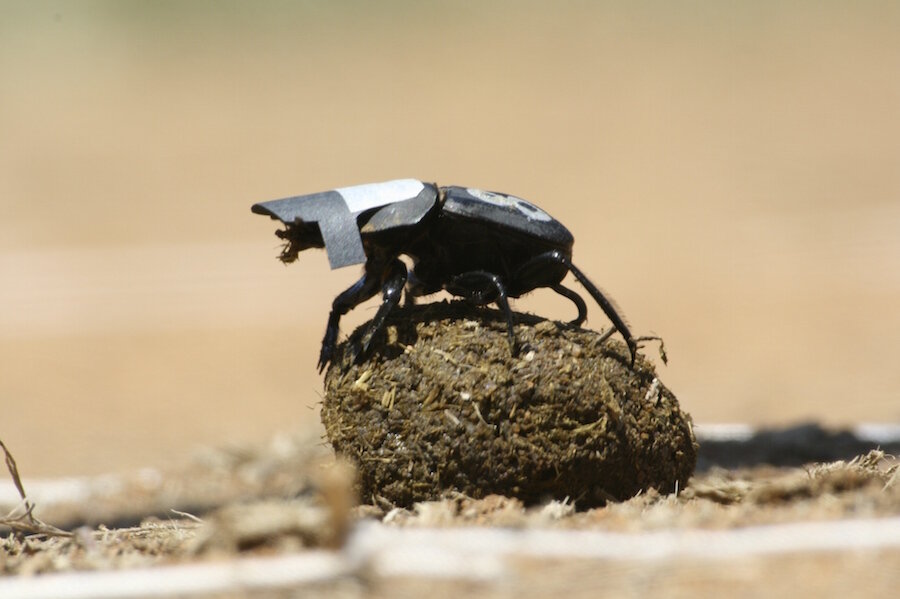Celestial navigation: Dung beetles navigate by 'snapshot' of the stars
Loading...
Dung beetles are big fans of getting their meals to-go, even if their process is far more involved than visiting a drive-through.
To begin with, scientists have observed that once dung beetles have found a new meal, they consult the starry night to decide where to go to enjoy it. The process behind how stars help the beetles orient themselves remains an enigma, but a new study offers a clearer view.
Scientists from Sweden’s Lund University have found that the beetles don’t continually check the stars like a reference map. Instead, they snag a quick “celestial snapshot” and store it in their memory for directions.
"We are the first to have shown that dung beetles are taking these snapshots. We are also the first to show how they store and use the images inside their tiny brains," said Basil el Jundi, researcher at Lund University, in a university press release.
How does it work?
The process starts with the competitive battle for food. Dung beetles enter a dung pile and have to claim their own piece of the pie. They break off a piece of dung from the pile and shape the piece into a ball – preparing for an efficient getaway. During the process, the beetle must also protect it from other beetles that may attempt to steal their ball. The faster the beetle can take its dung away from the pile, the better its chance of survival and a good meal.
Once the dung is rolled into the ball, the beetle commences with a dung dance, “a behavior in which the beetle climbs on top of its ball and rotates about its vertical axis,” explained the authors of the new study in Current Biology. As you can see in in the video above, the beetle spends a few moments on top of the dung consulting the stars and deciding where to head.
Then the dung beetle dismounts and rolls its food away from the pile in a straight line.
To test how the beetles were gathering information from the stars, the researchers allowed dung beetles to collect their dung following the normal practice, but under an artificial sky, controlled by scientists.
The scientists could control the stars' brightness and the choice of constellations. Importantly, they were also able to alter the direction of the moon and stars throughout a dung beetle's exit.
“We tested the underlying orientation mechanism by presenting beetles with a combination of simulated celestial cues (sun, polarized light, and spectral cues),” the study states. “We show that these animals do not rely on an innate prediction of the natural geographical relationship between celestial cues, as other navigating insects seem to. Instead, they appear to form an internal representation of the prevailing celestial scene, a 'celestial snapshot,' even if that scene represents a physical impossibility for the real sky.”
The scientists tweaked the direction of the celestial landmarks and found that it did not alter the path the beetles took if it was changed after the dung dance, indicating that the beetles take their “celestial snapshot” while dancing.
Other animals use similar methods to navigate. Ants take snapshots of their surroundings on Earth, Professor Jundi said. The Christian Science Monitor’s Robert Cowen reported on a landmark 1990 study that found some birds use the stars to gain their bearings. Likewise, bees have also been known to be able to determine the location of the sun, even after it has set, and navigate by the moon.
"Other animals and insects also use the position of celestial bodies to navigate, but the dung beetles are unique – they are the only ones to take a snapshot where they gather information about how various celestial bodies, such as the sun, moon, and stars, are positioned," said Jundi.






